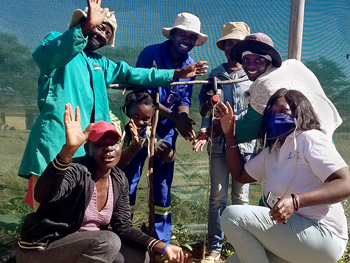
Monkey see, monkey do
Since 2009, nine least developed countries (LDCs) have announced plans or strategies incorporating elements of both low-carbon development and resilience to climate change. Low-carbon development is an approach that focuses on reducing greenhouse gas emissions through the development process. This is part of larger strategy to mitigate the effects of climate change.
The International Institute for Environment and Development (IIED) recently released a research paper on low-carbon resilience in developing countries. Susannah Fisher’s research paper is titled “Low-carbon resilient development in the least developed countries: Emerging issues and areas of research.”
Low-carbon resilience has become the new buzzword in climate change policy; it is an agenda that tackles carbon emissions (mitigation) while building climate resilience (adaptation) and supporting development with win-win policies.
This approach is linked to green growth policies, low carbon development and low emission development strategies and is also supported by negotiations at UN level to find linkages between these agendas. Although least developed countries are responsible for less than 5% of global greenhouse gas, nine have developed plans to bring together these three issues into one single agenda. However, research by the Institute suggests the rhetoric is greater than the actions and a learning-by-doing approach is necessary to generate robust evidence on where to find, and how to support win-win policies.
Resilience refers to building the capacity of society, whether individuals or communities, to recover after any climate-related shocks and is associated with adaptation to climate change. Low-carbon resilient development links all three of these policy objectives in the context of national development.
The number of strategies and plans at the national level indicates a widespread interest by developing country governments in how they can begin to incorporate both aspects of the climate change agenda at the national level. It also reflects a high level of support from development partners for these planning processes. The national plans and strategies show an emergence of climate planning on a different scale from the national adaptation programmes of action (NAPAs) and the nationally appropriate mitigation actions (NAMAs), which were driven and structured by the priorities and needs of the United Nations Framework Convention on Climate Change.
On the contrary, national plans and strategies described in this paper are products of development planning at national level cutting across the international divide between the elements of climate change mitigation and adaptation. However, while there has been an emergence of planning within national governments, there has been very little research or understanding of the different national priorities within the agenda of low-carbon resilient development, nor of how different countries, particularly the Least Developed Countries, are approaching this challenge.
According to Fisher, there are multiple political reasons for adopting a low-carbon resilient development agenda. “Some of the national reasons for adopting such an approach may lead to a slightly different focus in how the agenda is applied in a country. For example, green growth, an increasingly popular theme emerging in Rwanda, Ethiopia and Cambodia, emphasises poverty reduction through economic green growth. Ultimately, this could lead to low-carbon resilient development, but it is a different approach to one based on the more traditional policy domains of adaptation and mitigation through development planning” said Fisher.













































